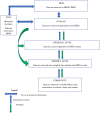Evaluation of the Universal Salt Iodization (USI) surveillance system in Tanzania, 2022
- PMID: 38640102
- PMCID: PMC11029623
- DOI: 10.1371/journal.pone.0299025
Evaluation of the Universal Salt Iodization (USI) surveillance system in Tanzania, 2022
Abstract
Background: The evaluation of surveillance systems has been recommended by the World Health Organization (WHO) to identify the performance and areas for improvement. Universal salt iodization (USI) as one of the surveillance systems in Tanzania needs periodic evaluation for its optimal function. This study aimed at evaluating the universal salt iodization (USI) surveillance system in Tanzania from January to December 2021 to find out if the system meets its intended objectives by evaluating its attributes as this was the first evaluation of the USI surveillance system since its establishment in 2010. The USI surveillance system is key for monitoring the performance towards the attainment of universal salt iodization (90%).
Methodology: This evaluation was guided by the Center for Disease Control Guidelines for Evaluating Public Health Surveillance Systems, (MMWR) to evaluate USI 2021 data. The study was conducted in Kigoma region in March 2022. Both Purposive and Convenient sampling was used to select the region, district, and ward for the study. The study involved reviewing documents used in the USI system and interviewing the key informants in the USI program. Data analysis was done by Microsoft Excel and presented in tables and graphs.
Results: A total of 1715 salt samples were collected in the year 2021 with 279 (16%) of non-iodized salt identified. The majority of the system attributes 66.7% had a good performance with a score of three, 22.2% had a moderate performance with a score of two and one attribute with poor performance with a score of one. Data quality, completeness and sensitivity were 100%, acceptability 91.6%, simplicity 83% were able to collect data on a single sample in < 2 minutes, the system stability in terms of performance was >75% and the usefulness of the system had poor performance.
Conclusion: Although the system attributes were found to be working overall well, for proper surveillance of the USI system, the core attributes need to be strengthened. Key variables that measure the system performance must be included from the primary data source and well-integrated with the Local Government (district and regions) to Ministry of Health information systems.
Copyright: © 2024 Mahwera et al. This is an open access article distributed under the terms of the Creative Commons Attribution License, which permits unrestricted use, distribution, and reproduction in any medium, provided the original author and source are credited.
Conflict of interest statement
The authors have declared that no competing interests exist.
Figures





References
-
- United Republic of Tanzania, Tanzania National Nutrition Survey 2018, no. June. 2019.
MeSH terms
Substances
LinkOut - more resources
Full Text Sources

